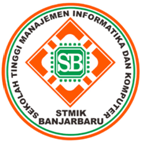Rancang Bangun Robot Remote Control Menggunakan Teknologi DTMF Dengan SIM800L GPRS GSM
Abstract
Remote Control Robot is a mechanical device that is controlled remotely. This research aims to overcome the reliability and efficiency constraints of communication on remote control of robots by using DTMF technology and SIM800L GPRS GSM module. The prototype consists of SIM800L GPRS module as communication module, Arduino Nano used as the main microcontroller, motor driver L298N to control DC motor, ultrasonic sensor HC-SR04 for object detection, and other electronic components. Tests were conducted to ensure connection to the cellular network, call reception, and use of DTMF, as well as security features so that the robot only responds to commands from authorized numbers. The results showed that the prototype successfully met its functionality needs. The robot can be effectively controlled via DTMF signals under various network conditions. The implementation of DTMF technology and SIM800L GPRS GSM enables effective control of the robot without physical presence at the same location.
Keywords: Robot Control; Arduino Nano; Dtmf Technology; Sim800l Gprs GSM
Â
Abstrak
Robot Remote Control merupakan perangkat mekanik yang dikendalikan dari jarak jauh. Penelitian ini bertujuan mengatasi kendala keandalan dan efisiensi komunikasi pada pengendalian jarak jauh robot dengan menggunakan teknologi DTMF dan modul SIM800L GPRS GSM. Prototipe terdiri dari modul SIM800L GPRS sebagai modul komunikasi, Arduino Nano digunakan sebagai mikrokontroler utama, motor driver L298N untuk mengontrol motor DC, sensor ultrasonik HC-SR04 untuk deteksi objek, dan komponen elektronik lainnya. Pengujian dilakukan untuk memastikan koneksi ke jaringan seluler, penerimaan panggilan, dan penggunaan DTMF, serta fitur keamanan agar robot hanya merespon perintah dari nomor yang diizinkan. Hasil penelitian menunjukkan bahwa prototipe berhasil memenuhi kebutuhan fungsionalitasnya. Robot dapat dikontrol secara efektif melalui sinyal DTMF dalam berbagai kondisi jaringan. Implementasi teknologi DTMF dan SIM800L GPRS GSM memungkinkan pengendalian robot secara efektif tanpa kehadiran fisik di lokasi yang sama.
Kata kunci: Robot Remote Control; Arduino Nano; Teknologi Dtmf; Sim800l Gprs Gsm
References
A. Virmansyah, “Rancang Bangun Prototype Sistem Kendali Pintu Air Bendungan Menggunakan SMS,†Tugas Akhir, Universitas Mercu Buana, 2018, [Online]. Available: https://repository.mercubuana.ac.id/ 40134/2/Abstrak.pdf
Y. Suzantry and Y. Mardiana, “Mobil Remote Control Berbasis Arduino Dengan Sistem Kendali Menggunakan Android,†Pros. Semin. Ilmu Komput. dan Teknol. Inf., vol. 3, no. 1, pp. 151–158, 2018, [Online]. Available: http://www.arduino.ic.
M. F. Susanto, D. N. Annisa, E. J. Pristianto, “Sistem Penguncian Menggunakan Teknologi DTMF NonStandar Berbasis Mikrokontroler,†Ind. Res. Work. Natl. Semin., pp. 566–569, 2022, [Online]. Available: https://jurnal.polban.ac.id/ojs-3.1.2/proceeding/ article/view/4190
S. Pakpahan and A. Agung, “Rancang Bangun AMF-ATS Berbasis SIM800L Dengan Fungsi Monitoring Status Switching Pada Genset,†Jur. Tek. Elektro, vol. 8, no. 1, pp. 81–89, 2019, [Online]. Available: https://ejournal.unesa.ac.id/index.php/JTE/ article/view/25787
P. R. Santoso, S. R. Akbar, E. S. Pramukantoro, “Implementasi Mekanisme Sleep-Wake Pada Node Sensor Berbasis GSM,†vol. 3, no. 4, pp. 3358–3367, 2019, [Online]. Available: http://j-ptiik.ub.ac.id
M. Suari, “Pemanfatan Arduino nano dalam Perancangan Media Pembelajaran Fisika,†Nat. Sci. J., vol. 3, no. 1, pp. 474–480, 2017, [Online]. Available: www.ecadio.com
I. P. L. Dharma, S. Tansa, and I. Z. Nasibu, “Perancangan Alat Pengendali Pintu Air Sawah Otomatis dengan SIM800l Berbasis Mikrokontroler Arduino Uno,†J. Tek., vol. 17, no. 1, pp. 40–56, 2019, doi: 10.37031/jt.v17i1.25.
F. B. Setiawan, Y. Y. C. Wibowo, L. H. Pratomo, and S. Riyadi, “Perancangan Automated Guided Vehicle Menggunakan Penggerak Motor DC dan Motor Servo Berbasis Raspberry Pi 4,†J. Rekayasa Elektr., vol. 18, no. 2, pp. 94–101, 2022, doi: 10.17529/jre.v18i2.25863.
R. A. S. P. S. F. Yudha, “Implementasi Sensor Ultrasonik Hc-Sr04 Sebagai Sensor Parkir Mobil Berbasis Arduino,†EINSTEIN e-JOURNAL, vol. 5, no. 3, pp. 19–26, 2019, doi: 10.24114/einstein.v5i3.12002.
S. Simanungkalit, “Studi Komparasi Pengontrol Robot Mobil Pada Smartphone Android Berbasis,†Tek. Elektro, Fak. Tek. dan Ilmu Komputer, UNIKOM, pp. 1–7, 2013, [Online]. Available: https://elib.unikom.ac.id/files/disk1/651/jbptunikompp-gdl-sitiuransi-32533-13-unikom_s-l.pdf
A. Widiyanto and N. Nuryanto, “Rancang Bangun Mobil Remote Control Android dengan Arduino,†Creat. Inf. Technol. J., vol. 3, no. 1, pp. 50–61, 2016, doi: 10.24076/ citec.2015v3i1.65.
R. Wijayanto, N. Pambudiyatno, and P. P. Surabaya, “Rancangan Kontrol Robot Car Menggunakan Gestur Tangan Berbasis Arduino Nano Dan Avr Dengan Sensor,†Semin. Nas. Inov. Teknol. Penerbangan, pp. 1–5, 2018, [Online]. Available: http://download.garuda.kemdikbud.go.id/article.php?article=979884&val=14474&title=Rancangan Kontrol Robot Car Menggunakan Gestur Tangan Berbasis Arduino Nano Dan Avr Dengan Sensor Accelerometer
B. Suhendar, A. Surahmat, and T. D. Fuady, “Sensor Robot Pemadam Api Dengan Beberapa Mode Operasi Berbasis Teknologi Dtmf, Bluetooth Dan Gsm,†J. Ilm. Sains dan Teknol., vol. 4, no. 2, pp. 135–150, 2020, doi: 10.47080/saintek.v4i2.1013.
A. Wijaya and D. Juliadi, “Rancang Bangun Robot Pembersih Lantai Menggunakan Arduino Nano Dengan Sistem Pengendali Berbasis Android,†J. Pseudocode, vol. 8, no. 9, pp. 98–107, 2021, [Online]. Available: https://ejournal.unib.ac.id/ pseudocode/article/ view/14444
H. P. Karnila, S. Sumardi, and D. Darjat, “Pembatas dan Pencatat No Tujuan Telepon yang Dapat Diprogram Untuk Diaplikasikan Pada Pesawat Telepon DTMF Berbasis Mikrokontroler AT89C51,†Naskah akademik Undip, pp. 1–9, 2011, [Online]. Available: http://eprints.undip.ac.id/ 25688/%0Ahttp://eprints.undip.ac.id/25688/1/ML2F097642.pdf
How To Cite This :
Refbacks
- There are currently no refbacks.










